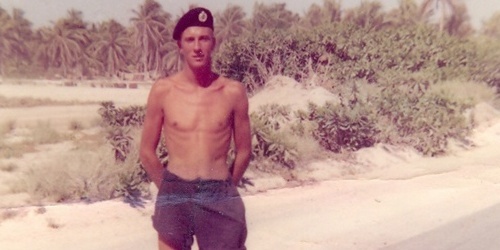Veterans from Tayside and Fife who say they were made ill after being exposed to radiation during nuclear weapons tests in the 1950s have claimed victory in their latest legal fight for compensation.
Thursday’s hearing in London was the third time veterans have staged a court fight for the right to claim damages. In June 2009, they sought permission from a High Court judge before arguing their case in the Court of Appeal in November 2010.
Appeal judges ruled a series of test cases were “statute-barred” because they were made too late and declined to exercise a discretion because they said veterans lacked evidence on the cause of illnesses.
But James Dingemans QC, representing a group of “lead case” veterans, told the three Supreme Court justices the appeal court ruling was “unfair.”
Those seeking compensation are normally required to register any claim within three years of becoming ill but Mr Dingemans argued those suffering from conditions had been repeatedly told by the MoD they had nothing to do with any exposure to radiation in the 50s and therefore could not be subject to time limits.
He added, “To have driven these people (out) without a hearing, without even cross examination … is wrong.”
Lawyers said several “lead case” veterans had died since starting litigation, with many fearing the MoD is stalling in the hope they will pass away.
Dundee man Tom Malone (73) was another ex-serviceman who has attributed a legacy of ill-health to the bomb blasts on Christmas Island. The former RAF steward witnessed H-bomb and atomic tests in 1957 and has backed the calls for compensation.
He described the blasts as “a crime against humanity” and said the action by veterans could help safeguard the lives of others in the future.
“This was a scientific operation and was nothing to do with war in a sense,” he said. “You are supposed to volunteer for any experiment being done by the forces and I didn’t.”
More than 1000 ex-servicemen from across the country have been waging a lengthy war with the Ministry of Defence (MoD) and lawyers representing them fired the latest salvo by asking three Supreme Court judges for permission to argue their right to seek damages.
After hearing the veterans’ submissions, the three judges agreed a full hearing should be held this year and, if the Supreme Court rules it admissible, veterans could launch damages claims in the High Court.
Those making the claims blame ill-health on their involvement in British nuclear tests in Australia, on Christmas Island and in the Pacific Ocean between 1952 and 1958. Chronic health problems cited by them include cancers, skin defects, fertility problems and birth defects in their children.
But while the MoD acknowledges it owes them a debt of gratitude, it has always denied any link between the exposure to radiation and any illnesses. It says the veterans’ cases are “hopeless” because they “could not show any causation,” while ministers also insist claims should not go ahead because they were made too late.
Leslie man John Noble (72) was wearing only a beret, shorts and sandshoes when he saw the bombs going off aged 21. As a member of the Royal Engineers, he was standing in a field at the end of Christmas Island and told to cover his eyes as atom bombs were dropped from balloons.
Describing “a flash and a slight buffet of wind,” Mr Noble said he and his comrades were knocked off their feet by the blast.
Mr Noble is convinced his two sons suffer health problems as a result of exposure, as Paul has brittle bone disease and Craig suffers from psoriasis, despite no family history of the illnesses.
“It’s good news but we’ve been fighting for a long, long time so we just have to see,” said Mr Noble, who is among those seeking compensation. “It’s been a long time coming and unfortunately a lot of people are dead now, but I wish everyone who is still fighting all the best.
“I think we nearly had it in the bag a while ago, but the change of government put things back a bit.”
Continued…
